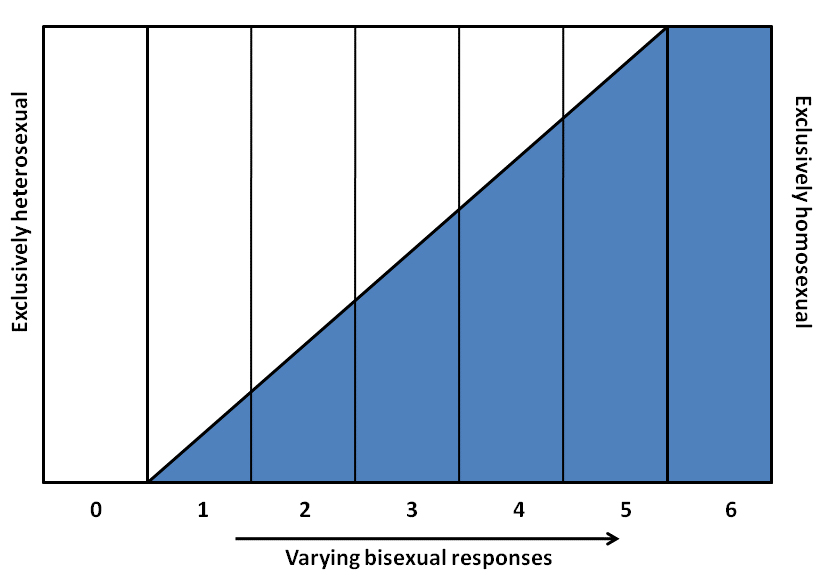| << Chapter < Page | Chapter >> Page > |
Alfred Kinsey was among the first to conceptualize sexuality as a continuum rather than a strict dichotomy of gay or straight. To classify this continuum of heterosexuality and homosexuality, Kinsey created a six-point rating scale that ranges from exclusively heterosexual to exclusively homosexual (see the figure below). In his 1948 work Sexual Behavior in the Human Male , Kinsey writes, “Males do not represent two discrete populations, heterosexual and homosexual. The world is not to be divided into sheep and goats … The living world is a continuum in each and every one of its aspects” (Kinsey 1948).

Later scholarship by Eve Kosofsky Sedgwick expanded on Kinsey’s notions. She coined the term “homosocial” to oppose “homosexual,” describing non-sexual same-sex relations. Sedgwick recognized that in American culture, males are subject to a clear divide between the two sides of this continuum, whereas females enjoy more fluidity. This can be illustrated by the way women in America can express homosocial feelings (nonsexual regard for people of the same sex) through hugging, handholding, and physical closeness. In contrast, American males refrain from these expressions since they violate the heteronormative expectation. While women experience a flexible norming of variations of behavior that spans the heterosocial-homosocial spectrum, male behavior is subject to strong social sanction if it veers into homosocial territory because of societal homophobia (Sedgwick 1985).
There is no scientific consensus regarding the exact reasons why an individual holds a heterosexual, homosexual, or bisexual orientation. There has been research conducted to study the possible genetic, hormonal, developmental, social, and cultural influences on sexual orientation, but there has been no evidence that links sexual orientation to one factor (APA 2008). Research, however, does present evidence showing that homosexuals and bisexuals are treated differently than heterosexuals in schools, the workplace, and the military. It is reported that in the workplace, for example, discrimination based on sexual orientation occurs at a rate of 4 per 10,000, which is higher than the rate of discrimination based on race, which stands at 3.90 (Sears and Mallory 2007.)
Much of this discrimination is based on stereotypes, misinformation, and homophobia , an extreme or irrational aversion to homosexuals. Major policies to prevent discrimination based on sexual orientation have not come into effect until the last few years. In 2011, President Obama overturned “don’t ask, don’t tell,” a controversial policy that required homosexuals in the US military to keep their sexuality undisclosed. Between 2004 and 2010, five states and the District of Columbia legalized gay marriage. The Employee Non-Discrimination Act, which ensures workplace equality regardless of sexual orientation, is still pending full government approval. Organizations such as GLAAD (Gay&Lesbian Alliance Against Defamation) advocate for homosexual rights and encourage governments and citizens to recognize the presence of sexual discrimination and work to prevent it. Other advocacy agencies frequently use the acronyms LBGT and LBGTQ, which stands for “Lesbian, Gay, Bisexual, Transgender” (and “Queer” or “Questioning” when the Q is added).

Notification Switch
Would you like to follow the 'Global sociology' conversation and receive update notifications?